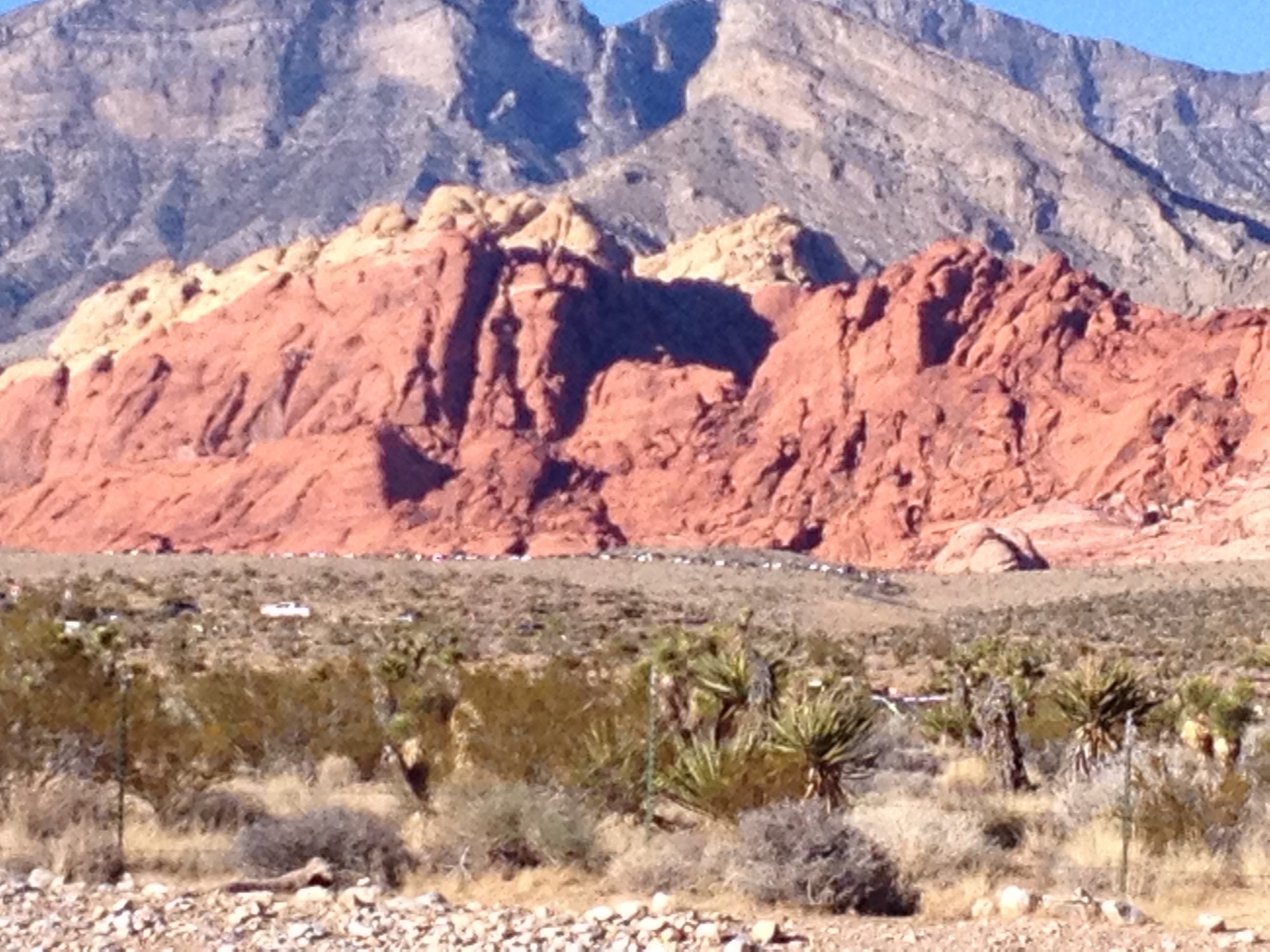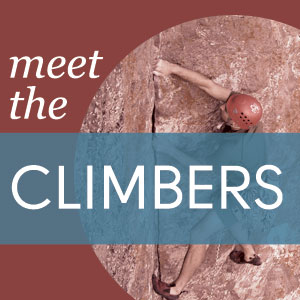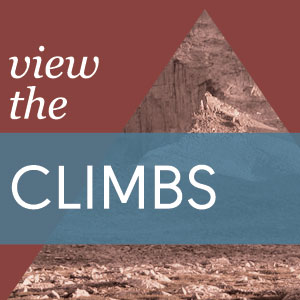 The day had started out perfectly. The approach had cruised by and we were at the base of our route racking up just as the sun hit the outskirts of the canyon. It was late November, the temps were cool and there wasn’t a chance the sun would touch the canyon walls high above us. We began working our way up the darkly varnished sandstone, dispatching pitch after pitch. Five pitches later , I found myself perched ten feet above my last bolt with a thin section of face climbing to navigate before I could clip the next protection bolt. One of my longtime climbing mentors once told me, “Dan, if you keep it together, something will always work out.” These words weighed heavily on me, as I climbed hesitantly, only to retreat back to a taxing resting stance. “Ah shit”, I yelled back to my partner John. I was obviously no longer in the “zone.” I inched upward, my mind starting to lose focus. In a last ditch effort to keep myself from falling, I grabbed a quickdraw from my harness and attempted to lasso the bolt that was just out of reach. “Shiiiiiitttt”, I yelled, as I started to pitch backward. Gravity had taken over and I had to rely on the gear to do its job. “Ah, ah, ah, ah, ah, ahhhhhhhhhhhhhhhhhhh”, the rope finally came tight and arrested me as I flipped upside down and came swinging hard into the rock face. “Damn it”, I exclaimed. I had just botched the sequence and all hopes of a free ascent had been lost. And I had failed!
The day had started out perfectly. The approach had cruised by and we were at the base of our route racking up just as the sun hit the outskirts of the canyon. It was late November, the temps were cool and there wasn’t a chance the sun would touch the canyon walls high above us. We began working our way up the darkly varnished sandstone, dispatching pitch after pitch. Five pitches later , I found myself perched ten feet above my last bolt with a thin section of face climbing to navigate before I could clip the next protection bolt. One of my longtime climbing mentors once told me, “Dan, if you keep it together, something will always work out.” These words weighed heavily on me, as I climbed hesitantly, only to retreat back to a taxing resting stance. “Ah shit”, I yelled back to my partner John. I was obviously no longer in the “zone.” I inched upward, my mind starting to lose focus. In a last ditch effort to keep myself from falling, I grabbed a quickdraw from my harness and attempted to lasso the bolt that was just out of reach. “Shiiiiiitttt”, I yelled, as I started to pitch backward. Gravity had taken over and I had to rely on the gear to do its job. “Ah, ah, ah, ah, ah, ahhhhhhhhhhhhhhhhhhh”, the rope finally came tight and arrested me as I flipped upside down and came swinging hard into the rock face. “Damn it”, I exclaimed. I had just botched the sequence and all hopes of a free ascent had been lost. And I had failed!
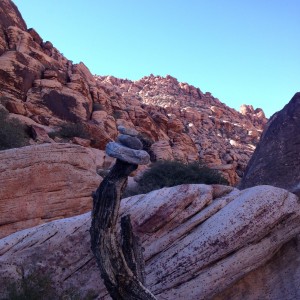 John and I had been planning our assault on Red Rocks Canyon, located just outside Las Vegas, Nevada, for several months. Our planned objective, was Fiddler on the Roof (5.10d). Our origins as fellow climbers had grown out of two very distinct climbing disciplines. John had found his passion for climbing by bouldering. The pursuit of ascending small boulders that require power, strength and dynamic atheticisim. On the other end of the climbing spectrum, my infatuation for climbing developed in what is often described as traditional climbing, and frequently referred to as “trad” climbing. Trad climbing involves scaling long vertical faces, with a partner, and placing removable protection as you ascend crack systems and featured rock. While each has its own place in the world of rock climbing, “boulderers” tend to be a tight knit group of pebble pinchers. Trad climbers, live to climb vertical terrain and are some of the most nerdy folks you will ever meet. They can talk for hours about gear placements, alpine rock climbs, and running it out high above your last piece of protection. But each is beholden to their discipline like a Buddhist monk is to his morning meditation.
John and I had been planning our assault on Red Rocks Canyon, located just outside Las Vegas, Nevada, for several months. Our planned objective, was Fiddler on the Roof (5.10d). Our origins as fellow climbers had grown out of two very distinct climbing disciplines. John had found his passion for climbing by bouldering. The pursuit of ascending small boulders that require power, strength and dynamic atheticisim. On the other end of the climbing spectrum, my infatuation for climbing developed in what is often described as traditional climbing, and frequently referred to as “trad” climbing. Trad climbing involves scaling long vertical faces, with a partner, and placing removable protection as you ascend crack systems and featured rock. While each has its own place in the world of rock climbing, “boulderers” tend to be a tight knit group of pebble pinchers. Trad climbers, live to climb vertical terrain and are some of the most nerdy folks you will ever meet. They can talk for hours about gear placements, alpine rock climbs, and running it out high above your last piece of protection. But each is beholden to their discipline like a Buddhist monk is to his morning meditation.
John and I met almost 15 years ago at a local sport climbing crag, Willow River State Park, in Wisconsin, located about 45 minutes from our homes in Minnesota. For most boulderers and trad climbers, sport climbing is what can only be described as the third path to climbing, which some deem neither as sport or climbing, due to the relative ease of access, comfort and security it offers to the climbing masses. Since climbers tend to gravitate to one style of climbing over another, I remained a die-hard trad climber and John was a dedicated boulderer. But, somehow we met in the middle at Willow River and clipped bolts on steep limestone, finding common ground in the world of sport climbing.
Willow River provided the right balance of challenge and insecurity for boulderers and trad climbers alike. Perched alongside a beautiful waterfall, the climbing at Willow River is unrivaled with big pockets and jugs that climb through roofs, angular corners and super steep sections of rock tilted back at over 45 degrees. You often find yourself nearly upside down, barely able to breathe due to the steepness, and pumped out of your mind. You cannot will yourself to climb through the cruxes, no matter how strong you are, if you don’t have the endurance and fitness to hold on.
John and his crew considered sport climbing at Willow River “training” for the boulders. At the time, I simply loved climbing with as many new climbing partners as possible, and sport climbing opened up a new and exciting facet to the climbing lifestyle. It was through this lens that I could see how bouldering was a very important component of climbing the more difficult climbing grades. And it intrigued me how John could unleash powerful moves through the steep cruxes that would so often shut me down.
John and his posse would show up after work nearly every weekday afternoon. John would first be seen across the river, sunglasses on, and pack weighted down with climbing gear, swimwear and a Tupperware chocked full of salad greens. He walked across the lower tier of the waterfall, like some sort of Zen master. He would drop his pack at the base of the crag, and then proceed to meditate, do yoga, or wander around the cliff by the water lost in another world. On most days, I was curious if he planned to climb at all. And then suddenly, without any particular warning, he would launch into climbing mode, and climb like a beast. Once on route John deployed his own style of climbing in a casual, yet calculated manner. He would finish the route, from bottom to top, without falling, and then come down and humbly claim that he “almost fell” or “I don’t know what happened up there, I just lost my mind”, as if he had succeeded by mistake or happenstance. But the more I hung around, the more I realized that John was an incredibly talented climber, who wore life loosely, and wasn’t hung up on what he did or didn’t do. When he did fall on a route, or botch a sequence, he took it in stride, and simply tied in and tried it again.
Since those formative years at Willow River, John and I have climbed all over the country, and shared some incredible adventures. A little over a year ago, John began expressing an interest in some of the bigger, and more traditional climbing objectives that he would hear me talk about and others he had searched out on his own. Since John’s relatives lived in Las Vegas, which was only a few miles from one of North America’s most popular climbing destinations, Red Rocks Canyon, a conversation slowly began about attempting long routes that the two of us could team up on and John could cut his teeth trad climbing.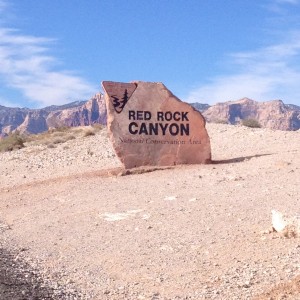
For those of you who are reading this who have no frame of reference for what constitutes an international climbing destination, Red Rocks Canyon needs little introduction. Red Rocks Canyon National Conservation Area, which is located in Nevada, is managed by the Bureau of Land Management as part of what is called its National Landscape Conservation System. Each year, over one million visitors come to Red Rocks to enjoy the spectacular desert landscape and climb and hike in and outside the preserve.
But to climbers, Red Rocks is a vertical paradise, synonymous with climbing legends like John Bachar, who free soloed The Gift at the stiff grade of 5.12d, and that was first put up by climbing legend Boone Speed in 1989. Lynn Hill and John Long who completed the first free ascent of the iconic Levitation 29, clocking in at 1,000 vertical feet of climbing terrain. Others like Bobbi Bensman, who with her partner Robyn Ebbersfeld nabbed the first free female ascent of the Original Route on the mesmerizing Rainbow Wall that sits over Red Rocks like a watchtower. But even more impressive than these climbing achievements are the Uriostes (George and Joanne) who developed hundreds of free climbing routes in Red Rocks that would later be repeated by climbers from all over the world. In recent years, the bouldering scene has blown up and young phenoms such as Alex Johnson, Jonathan Siegrist, Andy Raether, and a host of other rock jocks have unearthed hundreds of new boulders and sport climbs to secure a lifetime of climbing for future generations of climbers.
Over the years, I have visited Red Rocks with enough frequency, and with some great partners, that I have been able to sample and test myself on some of the classic lines. But there are several that remain elusive, for various reasons, and that is partly how my project to climb 50 routes by the time I turned 50 came to fruition. The biggest tick on my list of 50 is the Original Route on the Rainbow Wall, but I knew before John and I could tackle such an objective, we had to find some easier, low hanging fruit to pluck first. To illustrate the varied difficulty in traditional climbing, the Original Route on the Rainbow Wall, clocks in at the stiff climbing grade of 5.12b, which for a weekend warrior like me, is a monster of a route. It involves 14 pitches of mostly difficult climbing, between 5.10-5.12, and is a big day on the rock for most mere mortals. While Alex Honnold, a talented young climber from California, has soloed the Rainbow Wall (without a rope) in roughly two hours, it takes most parties a full day, and sometimes two. My goal for John and I, given our limited experience of climbing together on long, all day climbs, was to see if we could climb a shorter test piece, but one that would be equally challenging albeit a few grades easier.
Over an evening bouldering session in John’s garage, I tossed out the idea of climbing Fiddler on the Roof (“FOTR”).This 500 foot, 7 pitch, classic 5.10d, is touted as “without a doubt, the best route on the Black Velvet Wall” and very difficult at the grade. John was all in, and the planning began. An important point to inject here is that John’s most difficult traditional lead to this point had been a 5.9 at Devils Tower, WY. While John could hike any 5.12 sport climb and send boulder problems that are much harder, climbing trad at anything above 5.9 takes on a new skill set. We both agreed that FOTR would provide us with enough adventure and technical challenges to wet our appetites for the Rainbow Wall.
 As we racked up our gear at the base of FOTR, I stared up at the classic line and nervously at what is described in most guidebooks as the crux pitch – Pitch 3. The web site Mountain Project states it this way: “5.10- PG. Climb up to a bolt, then traverse right around a small right facing dihedral. Clip another bolt and continue right. There may be another bolt on this pitch (memory lapse), but at any rate, there are good gear placements. You basically traverse right along the lip of the huge roof on positive holds. It is exciting for both leader and follower, but not dangerous. If you fell though, you could go over the roof and would need to climb the rope to get back on. This pitch is 120′ or so and ends at a bolted anchor. Sweet.” We agreed that I would lead Pitch 3, and then we would “swing leads.” I started out the climb with the first lead, then John, and then me, and so on.
As we racked up our gear at the base of FOTR, I stared up at the classic line and nervously at what is described in most guidebooks as the crux pitch – Pitch 3. The web site Mountain Project states it this way: “5.10- PG. Climb up to a bolt, then traverse right around a small right facing dihedral. Clip another bolt and continue right. There may be another bolt on this pitch (memory lapse), but at any rate, there are good gear placements. You basically traverse right along the lip of the huge roof on positive holds. It is exciting for both leader and follower, but not dangerous. If you fell though, you could go over the roof and would need to climb the rope to get back on. This pitch is 120′ or so and ends at a bolted anchor. Sweet.” We agreed that I would lead Pitch 3, and then we would “swing leads.” I started out the climb with the first lead, then John, and then me, and so on.
While I had managed the classic traverse pitch (Pitch 3) lower down on the route without complication, I now hung from the rope embarrassed and upset with myself for not keeping it together. I stared up at the sequence that had shut me down. Then I looked to my left and a climber was soloing (without a rope) up nearly equal difficulty! “Oh, that is just great”, I muttered to myself. Slowly, I pulled myself together . I reminded myself of a time back at our local crag when John failed to complete a sequence and took a short fall off a route. After lowering off, he shrugged and gave it another attempt. I knew what I had to do and feeling sorry for myself wasn’t going to get us to the top of the next pitch. “Ok, I can do this, I am heading back up”, I tried to reassure myself. This time I climbed more confidently and focused hard on the contour of the rock, my foot placements and the distance I needed to cover to get back to the bolt. With my breath steady, I reached for the quickdraw and this time I clipped the bolt!
I belayed John up to the anchors and we took inventory. It was 4:30 p.m. and there was maybe an hour and a half of daylight left with two pitches above of equal difficulty still remaining. The wind had become increasingly more nasty by the hour and we contemplated whether to go up or down. The Zen master, in his casual way, shrugged off the need to finish the route in our current state. After much discussion, we agreed that we could come back for the upper two pitches when we had better conditions, and so we began the descent.
Once back on the ground, we could see the last of the sun starting to drop below the horizon. The temps were dropping quickly and I was feeling better and better about our decision to leave the route for another day. John was in great spirits and I was reminded of why he was such an inspiration. Undeterred, John was already plotting when we should come back to finish the route and take on our next objective on the Rainbow Wall.

The hike back to the car took us through a nearby wash, filled with the sweet smell of sage and amazing boulders. John discovered an incredibly featured boulder problem, that he immediately dubbed as “the next generation” of boulder problems. We stood below it, sussing out the sequences and dreaming of big sends on the steep, and tiny holds. I found myself staring back up the canyon at the smooth black varnished walls and dreaming of our next trip to set things straight with Fiddler on the Roof. Both lost in our own worlds, we walked back toward the car absorbed by the desert’s vast expanse.
